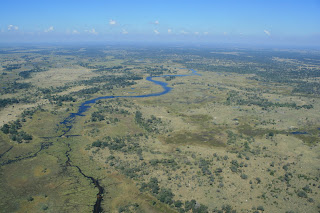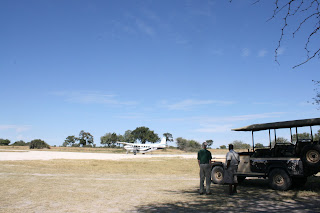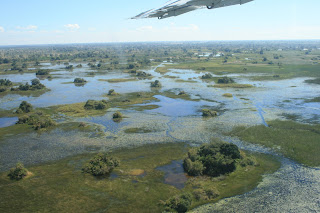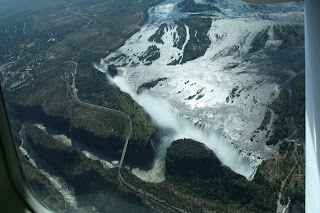Text & Photos by Aireen Navarro
Just when I thought I'm 'retiring' from all backpacking/trekking adventures; a friend invited me to a Mt. Pulag climb!!! My last backpacking adventure was at the same mountain, exactly 6 months ago (Oct 2008). That trip took its toll on me -- especially the freezing temperatures. On my way down, I kept telling my friends that it's my last backpacking trip....I was ready to hang up my boots and stick to the beach.
BUT.....I'm ready to take back my 'retirement announcement'! There's something about Mt. Pulag that makes it hard to say 'no' to. It had actually taken me 8 years before I finally got to the summit. My backpacking adventures started way back in 2000. Since then, I've been keen on climbing Mt. Pulag...and this finally happened last year!
We set off from Manila on the evening of Oct 17th via a 6-hour bus trip to Baguio City. Got to the city of pine trees at 0600H on Oct 18th, ate breakfast, did our last-minute shopping for food & water supplies, then we're off to a 2-3 hour drive to Kabayan, Benguet via Ambuklao with our hired jeepneys owned/driven by very skilled local drivers who are very familiar about the intricacies of driving on narrow winding mountainside road networks.
The view around Ambuklao Dam is beautiful! It's approx. halfway to the DENR office where a mandatory registration/briefing's conducted. This usually takes approx. 40 minutes up to an hour, depending on the Q&A portion. Last-minute shopping and thick blanket rentals are available.
The DENR office emphasizes the COLD, the unpredictability of drastic climate changes up there, ‘unpredictability’ as the name of the game and the fragile ecosystem which requires us to stay on established walking trails and use designated ‘loos.’
From there, it's a really BUMPY road to Ambangeg Ranger's Station where local guides and porters wait. We’re talking about stiff hands after the drive – stiff from tightly holding on to our jeepney’s handrails so as not to fall off. Top loading (riding on top of the jeepney) is no longer allowed on this last jeepney-ride leg.
To protect and promote local livelihoods and the Mt. Pulag National Park, local guides/porters are mandatory and depend on the number of visitors. More information from this weblink (http://pawb.denr.gov.ph/protected/mt_pulag/pulagvik.htm). Even if you're accompanied by seasoned guides from Manila, you still need to hire local guides and porters as they intimately know the ins & outs of the area, including its unpredictable weather patterns.
After we had our lunch and last-minute preparations at the Ranger's Station, we set off to the Grasslands Camping Ground 2 which can be hiked in less than 4 hours if you're physically fit or a seasoned hiker/backpacker. After less than an hour of trekking via the easiest trail out of 3 trails from Benguet (we went via Ambangeg), it rained. Hard. DOWNPOUR. My extra-large trash bags effectively served as my poncho/raincoat. Thank God the rain stopped and I was still ‘mostly’ dry. Otherwise, I'd FREEZE before I even get to the camp site.
That was a grueling hike! But the vegetation / terrain made it very interesting. A place to rejuvenate the senses - fresh air! Everything's green - different shades of greens and browns. My heavy backpack took its toll on me. I was one of the last groups to make it to our campsite --- after almost 5 hours of hike/water break/photo stops/hike! I was getting worried that I might miss the sunset! That thought was a good way to push myself to get moving!
Most tents were already set up with the sun setting down by the time we got to our camp site. Good thing I was able to catch the sunset! The explosion of colors and pockets of ‘sea clouds’ made the loooong day worth it! Freezing hands aside, I braved the COLD winds and took photos before taking refuge inside our assigned tents. By the time I changed into dry clothes & socks, my extremities were already numb from the COLD.
We are talking about freezing temperatures. The kind that makes your nose drippy the whole time, the kind that makes you want to just roll into a fetal position, all covered by layers upon layers of skull caps, shirts, jackets, pants, socks and scarves inside your sleeping bag. The kind of cold that even taking a pee is an ordeal as it entails going out of your tent and face the COLD. I had to forcibly drag myself out of our tent to eat dinner. Food needed for sustenance for our very early morning hike to the peak of Mt. Pulag.
The freezing temperatures woke me up every hour. Eyes and head hurting from the cold, we finally heard our wake up call. We set off at 0330H on Oct 19th, estimating a 2-hour hike to get to the peak of Mt. Pulag before the sunrise. That was TOUGH!!! Ever hiked amid thick fog? Barely seeing what you’re stepping on, where you're at? Voices carried away by strong, freezing winds? There was a time when I was separated from my group. That was scary!!! Howling winds slapping on me from different sides, barely able to see with my weak headlamp, covered in clouds (drizzly feel to it), seeing ice crystals on my eyelashes, my shouts were pointless. I stayed put on the trail and waited until another group walking at a slower pace, reached me.
FINALLY, we reached the summit of Mt. Pulag!!! We missed the sunrise! That was a bummer but at least I didn’t miss that much coz the people who got there before sunrise told us they didn’t see a spectacular sunrise as they’d hoped for as it was covered with clouds and fog. I got to the summit at 0615H. It’s like a party at the summit!!! Everyone simply HAPPY & jumping, shouting at the top of their lungs. I finally made it to the 2nd highest peak in the Philippines!!!
At 2,922 meters above sea level, reaching the peak of Mt. Pulag is a heady experience!!! Standing up there, literally ‘walking on the clouds,’ turning around with a 360 degree view of the ‘sea of clouds’ – WOW!!! I was practically right at the middle of where the borders of 3 mountainous provinces meet: Benguet, Ifugao and Nueva Vizcaya. Given the peak’s elevation, it rains most of the year. We got lucky it cleared for a few minutes but we still got wet with the clouds & strong freezing winds slapping around us from all directions.
We took refuge behind dwarf bamboos endemic to the Mt. Pulag National Park. Another endemic vegetation is the Benguet pines which were all over our camp site, at a lower elevation. There were hundreds of other plant species with more yet to be documented. Of course, it’s also home to over 33 different species of birds and several mammals under the ‘threatened species’ list: long-haired fruit bat, bowet, giant bushy-tailed cloud rat, dwarf cloud rat and Philippine deer. I didn’t see any of these mammals though. Maybe in my next adventure to Mt. Pulag???
The hike back to our camp site was sad. It’s like saying goodbye to a very special place.
By 0930H, we all had breakfast and were just ‘sunning’ ourselves, looking up a brilliant blue sky and clouds, serenaded by wind & tree songs.
Before we know it, we packed up and hiked back to the Ranger’s Station. Every step away from our camp site was a ‘farewell step’ to my backpacking days….
But, now that a friend invited me to a Mt. Pulag climb, I might meet up with the local friendly guides again!!! We’ll see :)
Itinerary:
Day 1-2 October 17-18, 2008
2300H Assembly Victory Liner Cubao
2345H Loading Bus
0000H ETD Manila to Baguio
0600H ETA Baguio
0700H Breakfast
0830H ETD Baguio to Ranger’s Camp
1030H ETA DENR
Briefing and Orientation
1230H ETA Ranger’s Station
Lunch
1330H Start Trek (Ambangeg Trail)
1800H Prepare Dinner
1930H Dinner
2045H Socials
2200H Lights off
Day 3 October 19, 2008
0330H Wake up Call Summit
0530H ETA Summit
0700H ETD Summit
0830H ETA Base Camp
0900H Breakfast
1000H Break Camp
1030H ETD Base Camp to Ranger’s Station
1330H Prepare Lunch
1400H Lunch
1400H Wash Up
1430H ETD Ranger’s Station to Baguio
1830H ETA Baguio
Buy Souvenirs
2100H ETD Baguio
0200H ETA Manila (Oct 20)

























































